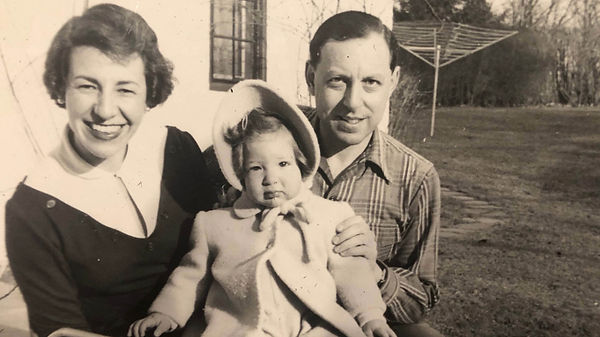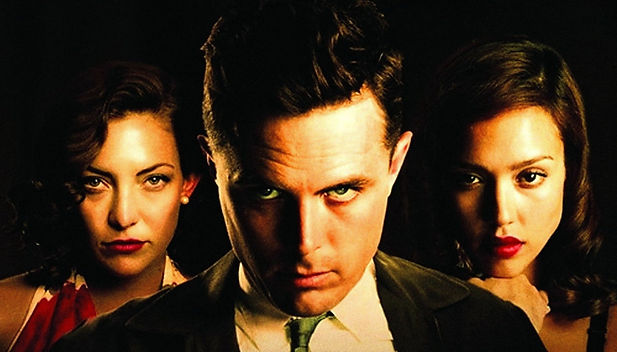
In The News


Daniel Gordis’ ‘Israel: A Concise History Of A Nation Reborn’ To Be Adapted As TV Docuseries
By Denise Petski
August 16, 2021 6:00am
EXCLUSIVE: Bradford L. Schlei’s Stone Canyon Entertainment (Who Are The Marcuses?, The Trust) has acquired Daniel Gordis’ prize-winning nonfiction book Israel: A Concise History of a Nation Reborn, to adapt into a television docuseries. Director Matthew Mishory (Artur Schnabel: No Place of Exile) will serve as creator and direct all six episodes. Production is expected to begin in 2022.
Winner of the 2016 National Jewish Book Award, A Concise History of a Nation Reborn is described as “the first comprehensive yet accessible history of the state of Israel from its inception to present day.” In the book, Gordis relays the drama of the Jewish people’s story and the creation of the state, illustrating how Israel became a cultural, economic and military powerhouse—but also explains where Israel made grave mistakes.
The producers will film additional material for the series’ final episode to cover the period since the book’s publication, including: the Abraham Accords; shifting alliances in the Middle East; Israel’s new and highly-symbolic diverse governing coalition; and the ascendence of the Israeli green economy.
Stone Canyon’s Schlei (Swingers, Sling Blade, Spun) and Rob Levine will executive produce. Gordis will be creatively involved in the development of the series. “We’re honored to have the opportunity to adapt Daniel’s essential and critically-acclaimed work for the screen,” said Schlei. “And I am thrilled to be partnering again with Matthew to tell another story of Israel’s complex, fascinating, and ultimately uplifting history.” Mishory adds, “While rife with conflict and setbacks, Israel’s transformation from the poor, food-rationing young country of my father and grandparents to the high-tech, biomedical, and ecological powerhouse of today is a story that will transfix and inspire the world.”
Gordis is Senior Vice President and Koret Distinguished Fellow at Shalem College. The author of 12 books, Gordis is a regular columnist for Bloomberg Opinion and host of the Israel from the Inside podcast and Substack.
Mishory and Stone Canyon recently completed principal photography in Israel and the U.S. on the documentary feature, Who Are The Marcuses?, about a mysterious couple whose half-billion-dollar gift imagines regional conflict resolution in Israel and peace through water. The film features Warren Buffett, Israeli President Isaac Herzog, Gordis, best-selling philosopher Micah Goodman, Randol Schoenberg, and others.
Stone Canyon and Mishory were repped in the deal by Matt Ochacher of New Wave Entertainment. Gordis is repped by Richard Pine of InkWell Management, New York.

Feb 18, 2021 2:30pm PT
Documentary ‘Who Are the Marcuses’ Will Look at Mysterious Israel Donor Couple - Film News in Brief
By Jazz Tangcay
Plus Icon
Stone Canyon Entertainment has announced the start of production on “Who Are the Marcuses,” a feature documentary about a mysterious couple who donated half a billion dollars to Israel, the largest single gift in the history of the state.
Matthew Mishory is directing, with Stone Canyon’s Bradford Schlei and Alvaro Fernandez producing, and executive producers Marc Bennett and Rhino Films’ Stephen Nemeth. Filming is set to begin in Israel and in Austin, Texas in the first quarter of the year for a 2022 release. The film pieces together the lives of Holocaust refugees Lottie and Howard Marcus (pictured), who lived in a modest San Diego apartment and bequeathed half a billion dollars to Ben-Gurion University of the Negev to study water management.
The couple hoped their gift would help bring about regional conflict resolution in Israel and peace through water. The film will explore how they invested their nest egg after meeting Warren Buffett when he was a grad student. Mishory has also made documentaries about Derek Jarman, James Dean, Artur Schnabel and Alexander Mosolove.
“What could be more compelling than a mystery story that explores our generation’s most timely issues: climate change and wealth accumulation? This is that story,” said Stone Canyon’s Schlei. “I was big fan of Matthew’s previous films and am thrilled to be working with him on this one.”

MOVIE REVIEW | 'THE KILLER INSIDE ME'
The Pulp Inside Him as It Turns to Rot
New York Times review by A.O. Scott - June 17, 2010
“Around here, if you’re not a man and a gentleman, you’re nothing,” says Lou Ford, the protagonist of “The Killer Inside Me.” A murderous sociopath, cowardly and cold and particularly brutal toward women, Lou is in effect introducing the tale of his own self-annihilation. On the surface a polite, upstanding fellow — a sheriff’s deputy with fine manners and a clean white shirt — Lou guides us on a grisly tour of the abyss that is his soul.
The Texas town where he lives is a place, at least in Michael Winterbottom’s nasty and uneven adaptation of Jim Thompson’s surpassingly mean little crime novel, where traditional courtesies coexist uneasily with the energy and corruption of the 1950s oil boom. (The film is set in 1958, six years after the book’s publication, perhaps to avoid anachronism in the musical selections). Not that Lou, played by Casey Affleck, is a symbol of economic progress or social disorder. As conceived by Thompson and embodied by Mr. Affleck (Stacy Keach played the character in an earlier film version), Lou is something much sicker and more interesting.
At one point he reaches up to a bookshelf displaying volumes of Freud and takes down a Bible. Tucked between its pages is a stash of pornographic snapshots, apparently taken by Lou’s father. That brief scene suggests a lode of pathology rich enough to keep a team of psychiatrists in business for years, or else, as it happens, to get a bunch of people killed.
The first of these is Joyce (Jessica Alba), a prostitute who lives on the edge of town and becomes the eager masochistic object of Lou’s sadistic lust. The first time they meet, she slaps his face and he whips her with his belt. Thereafter they dwell in secret erotic bliss, at least until he beats her to death with his gloved fists in a scene that brings an unpleasantly graphic connotation to the idea of pulp fiction.
Mr. Winterbottom, a protean and prolific filmmaker, has often shown an interest in finding the point where cinematic artifice collides with literalism. Movies like “The Road to Guantánamo” and “In This World” blur the line between fiction and documentary, reconstructing true stories with nonprofessional actors in real locations. “Tristram Shandy: A Cock and Bull Story” pretends to be a movie about the failed making of a movie, while “9 Songs” is, technically if not quite in spirit, a work of hard-core pornography.
The explicit brutality of “The Killer Inside Me” seems to aim for a similar transgression, startling us with a bloody truth that other movies would only suggest. But of course the violence is no more actual — and no less stylized — than anything else in the movie. It is also linked, visually and thematically, with the film’s teasingly salacious depictions of sex in a way that suggests a director primarily concerned with finding out what he can get away with, and not entirely sure what he’s doing.
Jim Thompson had no such trouble. His book’s first-person narrative turns a tight thriller into a psychological case study and a candid, unhinged pseudo-memoir. In the best pulp tradition the novel mixes up breathless prurience and shocked moralism — you can be turned on, but only if you’re also horrified — as it sends its main character down the slippery slope from kinky sex play to vicious homicide. Along the way there are lies, double-crosses, blackmail schemes gone awry and an atmosphere of depravity that is both disturbing and, partly by dint of Thompson’s matchless literary artistry, exhilarating.
Mr. Winterbottom’s film, written by John Curran, is clearly enamored of the novel and labors to be true to its durable, somewhat appalling power. But while the filmmakers succeed in evoking the queasy, lurid ambiance of Thompson’s hothouse world, they can’t quite figure out how to duplicate his remorseless storytelling skill. Plot may be secondary to sensation in a movie like this, but it nonetheless has to be handled cleanly, and the narrative here, which should be intriguingly complicated, is just plain messy. Characters show up and start talking — a seedy union official played by Elias Koteas, a powerful businessman played by Ned Beatty, a skeptical federal agent played by Simon Baker — and their labored exposition obscures more than it clarifies.
Lou, who has a respectable fiancée named Amy (Kate Hudson), also has a dark history, suggested in confusing flashbacks and oblique conversations, that involves possible murder, sexual abuse and other family secrets. This background may or may not explain Lou’s descent into criminality — the murders he commits can be interpreted as part of a long-gestating plan of revenge — but it is explored in such a lumbering, incoherent way that the film becomes blurry and distracted just when it should be gathering momentum and force.
Mr. Affleck, with his reedy voice and sneaky Boy Scout demeanor — Eddie Haskell on his way to strangle a puppy in the Cleavers’ back yard — turns out to be perfect for Lou Ford, and his performance is the most effective thing in “The Killer Inside Me.” His Lou, a doctor’s son who lives in a stately house where he listens to opera records and thumbs through bulky old books, often looks like a little boy trying on grown-up clothes.
Even when he drops his voice to a menacing whisper or blows a confrontational gust of smoke from one of his cigars, Mr. Affleck registers a hint of panicky uncertainty. And when he is perpetrating the unflinchingly filmed acts of violence that have already made this movie somewhat controversial, he seems almost as vulnerable as his victims. You may feel a twinge of sympathy for this monster, a strange and vivid character who deserves all the torments of hell, and also a better movie.

FILM REVIEW; On a Journey Into Hell, Chortling All the Way
By STEPHEN HOLDEN
Published: March 14, 2003
Each time one of the speed freaks who scuttle around ''Spun'' like cockroaches on a hot stove snorts another line of crystal methedrine, the soundtrack erupts with a jolt and the camera zeroes in on an eyeball spinning like a pinwheel in a wind storm. When the person doing the snorting is Ross (Jason Schwartzman), a meth addict whose life has spiraled out of control, his fantasies spill across the screen in jerky cartoon images, many of them pornographic. That's one of the movie's rancid observations: speed and pornography (with bondage and anal sex the preferred modes) go together like bacon and eggs. (Or should I say rats and garbage?)
''Spun,'' which jumps around the shabby sun-baked flatlands of North Los Angeles Valley, from junk-strewn bungalow to seedy motel room to convenience store, is a swaggering journey into hell that conveys a chortling amusement at its own apocalyptic imagination. Eric Broms's cinematography bleaches most of the color out of its settings, leaving only acidic tints and grimy crevices. This is a world where beauty (or even the possibility of beauty) no longer exists.
As the camera lurches from one disaster area to the next, no particle of dirt, chip of crumbling plaster or crushed beer can is left unexamined amid the festering piles of junk in which its characters wallow oblivious to their own messes. When a constipated young woman goes to the bathroom, the camera dutifully trails along behind to observe her retching and eventually to peer down the flushing toilet. Whether it's that strung-out woman's rotten teeth or an extreme close-up of a syringe puncturing an arm, the camera is right there gaping.
The film, directed by Jonas Akerlund from a screenplay by Will De Los Santos and Creighton Vero, is an obvious homage to Darren Aronofsky's three-year-old druggie nightmare, ''Requiem for a Dream.'' Mr. Akerlund comes from a music-video background, having directed Madonna's ''Ray of Light,'' and the movie is a tour de force of grunge atmosphere and tricky editing in which the jolts and cartoon flashes are seamlessly woven into the narrative.
Like ''Requiem for a Dream,'' ''Spun,'' which opens today in Manhattan, blends an attitude of titillated revulsion with a hip gallows humor. Although there's nothing here as uproarious as the earlier movie's images of a heaving and belching refrigerator taunting a famished woman driven crazy by diet pills, ''Spun'' invites you to regard the spectacular squalor of its characters' lives with a smirking condescension.
The most frenetic of those characters, Spider Mike (John Leguizamo), is a jittery, paranoid speed freak who shoots crystal meth and imagines that every vehicle outside the shack he shares with his depraved girlfriend, Cookie (Mena Suvari), is a police car. Cookie is a shrill sex-crazed wreck of girl with brown teeth and red-rimmed eyes. Ms. Suvari's performance in a movie that explodes with profanity is a jarring turnabout from the lubricious teenage fantasy she embodied in ''American Beauty'' and (like many of the other performances in the movie) a small acting coup.
Frisbee (Patrick Fugit), the most pitiful member of the crew, is an inarticulate stumblebum with a face strewn with oozing pimples who lives with his 400-pound mother and is addicted to video games as well as speed. Arrested by two corrupt policemen (Peter Stormare and Alexis Arquette), he is coerced into wearing a wire while calling on Spider Mike.
The most ominous character, identified only as the Cook (Mickey Rourke), is the movie's master chef of chemical stimulation, and his combustible motel-room speed factory of bubbling caldrons, tubes and beakers suggests a Rube Goldberg contraption in a Frankenstein laboratory. The role is a comeback for Mr. Rourke, who growls and struts through the film in white cowboy boots and matching hat, fingering a gun. When he isn't working, the Cook, who is as sinister a macho caricature as the movies have produced in a while, obsesses out loud and obscenely about women with large breasts and small butts.
''Spun'' doesn't have much of a story. Ross, a college dropout with mounting debts, becomes the chauffeur and errand boy for the Cook in exchange for free drugs. Ross, who has a taste for bondage, has been having a fling with a stripper, April (Chloe Hunter), whom he leaves bound and gagged in his motel room while he gallivants around with the Cook and his girlfriend, Nikki (Brittany Murphy), in his beat-up Volvo. One of his first assignments is to take Nikki and her beloved dog, which has turned green from inhaling crank fumes, to a pet hospital. After Nikki, a Las Vegas stripper, and the Cook have a falling out, Nikki and Ross fall into a haphazard romance.
Every now and then Ross tries to reach an old girlfriend in Los Angeles whom he owes money. The movie's final scene takes him to the city, where they meet while the Cook visits his connection, known as the Man (Eric Roberts doing a flamboyant gay caricature).
If ''Spun'' doesn't glamorize the world it surveys, its parade of reeling potty-mouthed clowns (especially Mr. Rourke's cowboy chemist) still exudes a kind of doomy charisma. Think of them as denizens of a demonic sideshow.

'Swingers': Bonding Gets a '90s Make-Over
Relaxed, hip and funny, the Jon Favreau film casually captures the spirit of L.A.
October 18, 1996|KENNETH TURAN | TIMES FILM CRITIC
Male bonding may be the most overrated of movie emotions. Classic scenes like Humphrey Bogart putting his arm around Claude Rains at the end of "Casablanca" excepted, the spectacle of guys hanging out with guys is invariably tedious, even to other guys.
Especially to other guys.
So it's a most pleasant shock to experience "Swingers," a guy film that gives you something to latch onto, that makes male bonding both believable and appealing. Ruefully funny and unpretentious, with an air of relaxed and confident hipness, "Swingers" is helped along by a clever script and the not surprising fondness it feels for its characters.
Directed and photographed by Doug Liman for a bargain $250,000, "Swingers" was written by star Jon Favreau to showcase himself and his actor friends. Shot in the clubs and boites of Hollywood after dark, a locale where a bar can't be cool unless it has no sign and is impossible to find, the film's passion for ambience, its use of locations from the Dresden Room to the par-three golf course in Los Feliz, is one of its charms.
More than any other recent film, "Swingers" feels like L.A. now. Here are the parties scheduled for 8 that don't get going till midnight, the spectacle of everyone traveling solo in their cars and locking up with the Club, even a New Beverly repertory schedule taped to a refrigerator. And here are the guys, looking for women and looking a little foolish in the process.
Except for Mike (writer Favreau), who is mourning more than looking. An actor and comic--maybe you caught him hosting open-mike night at the Ha Ha House on Pico--Mike left New York six months ago after a traumatic breakup with Michelle, and he's nowhere near over it.
A storehouse of neurotic impulses, Mike swills in the ale of obsessive self-pity. No situation is too inappropriate, no potential listener too oblivious, for Mike to put on his hangdog look and trot out his morose tale of woe.
Trent, Mike's best friend, decides to snap him out of it. A practiced seducer (played with great comic verve by Vince Vaughn), Trent has apparently dedicated his life to "getting out with the beautiful babies." Women are not keen on sensitivity, he advises Mike; if you want to get anywhere, "you've got to get off this respect kick."
After some amusing misadventures in Las Vegas, where sitting at a $100 minimum table by mistake is the least of their problems, Trent and Mike return to L.A. and hook up with two other pals, a hot-headed video hockey freak named Sue (Patrick Van Horn) and Rob (Ron Livingston), another ex-New York actor agonizing about how much of a comedown from Hamlet taking a part as Goofy would be.
Most of "Swingers" involves hanging out with these guys as they prowl around in search of female phone numbers and argue about callback etiquette before concluding that "two days is the industry standard." Not noticeably enlightened and occasionally infantile, Mike's pals have a saving grace, and that is their genuine concern for their friend, and not just in a beer commercial way. Their desire to help Mike out, to convince him that, to use their slang, "you're so money and you don't even know it," is both touching and genuine.
Casually but pointedly written and acted with easy assurance, "Swingers" also benefits from the hang-loose air that comes from being shot on the fly with a super-light Aaton 35-III camera. It enabled director-cinematographer Liman to work effectively in clubs and pull off genial visual spoofs of key scenes in "Casino" and "Reservoir Dogs."
Confident of its emotional effects, "Swingers" knows how to breathe life into its people, and hooking audiences is its reward.